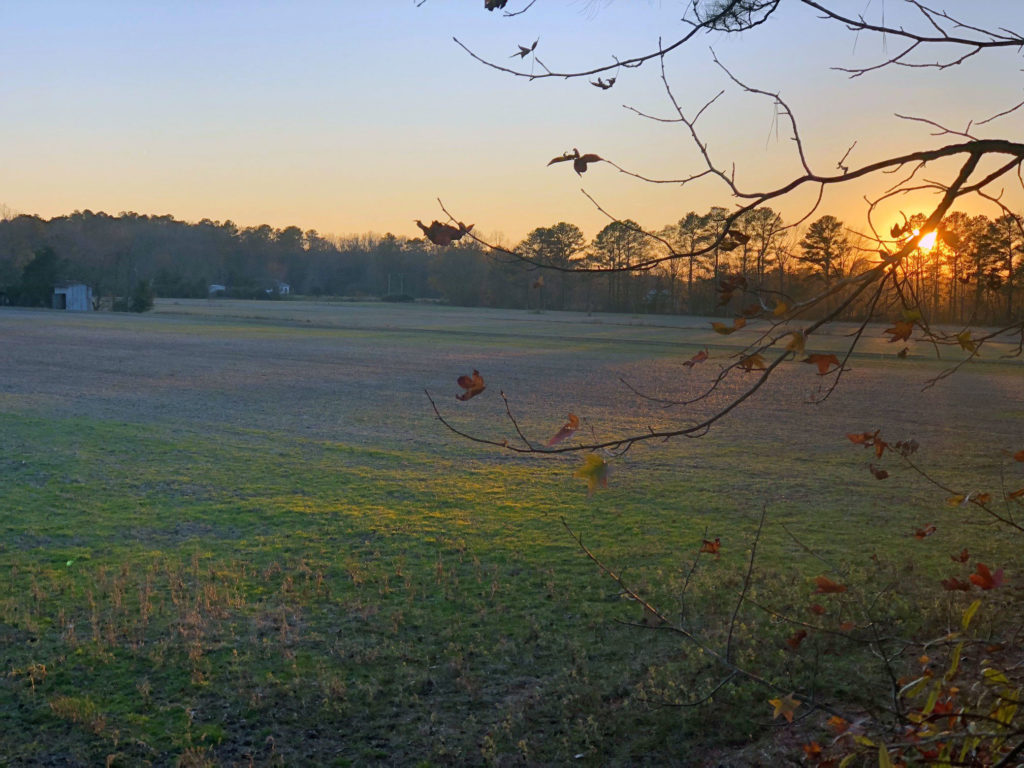Playing in the Dirt Still

July 7, 2019 – 7:28 AM
The picture for this post is Ridge Farm looking West across two of the field we are building wetlands on. We are going to move A LOT of dirt. It is July, and we are almost ready to really start playing in the dirt on Ridge Farm. All our approvals are in place with USDA/NRCS so we are about ready to start building the 20 acres of wetland and waterfowl habitat in a few days. Planning on this project has taken over two years and that is truthfully about average based on the size and complexity of what we are doing. I hired two consultants to assist me in the design process Chris Clouser and Spencer Waller. Chris now owns a wetland an wildlife habitat design and consulting firm, Blue Acres. Chris has worked closely with Orion Land and Wildlife Management in preparing the design of these projects with Spencer Waller owner of Orion will be managing construction of the habitat and planting of the native grasses. We worked together with NRCS to design and gain engineering approval for these projects.
After nearly two years of planning the farm we are ready to break ground. It is relatively dry right now so that will be helpful. Hopefully we can get in and out of the construction phase efficiently to avoid creating a big mud pit. Below, I have attached a plan view of the project for you to review.

The premise of the project is to conduct a basic cut and fill scenario across the site. This means in one area we are cutting dirt to build wetlands while in another we are building (“filling”) a berm berm to flood existing ground elevation. This cut and fill scenario creates efficiencies in the different habitat types created in the project. The cut component of the project is done by creating a series of connected “potholes” in the field to create a natural wetland depressions. These formations are approximately 6 inches to 18 inches in depth. The material used from the potholes is used to construct the low level earthen berm around the other part of the project area. The outcome of these two practices creates a natural wetland system, as well as, a managed shallow water area where water control structures are used to manage water levels inside the impoundment. Managing water levels is required to create conditions for moist soil plants.
After nearly two years of planning the farm we are ready to break ground. It is relatively dry right now so that will be helpful. Hopefully we can get in and out of the construction phase efficiently to avoid creating a big mud pit. Below, I have attached a plan view of the project for you to review.
The natural wetland systems will be managed largely against woody growth but will be allowed to undergo natural successional changes in wetland plant communities. The potholes will only be managed by mowing the vegetation once a year to prevent a monoculture of sweet gums, red maple or other low value woody plants. In the upland components of the natural wetland projects native warm season grasses like switch grass, indian grass and blue stem varieties will be planted. Wild flowers are also incorporated into this planting mix for pollinators. Native grass buffers provide habitat for migratory birds and upland wildlife.
The habitat created with the low earthen berms will be managed annually for moist soil vegetation. Moist soil management is a proven practice by wildlife managers to maintain highly valuable seed bearing vegetation. Plants which rapidly populate or pioneer an environment tend to be plants which flower rapidly and create a lot of seed. One of the principle needs of wintering waterfowl is food and moist soil plants like fall panicum, nut sedge, smart weeds, and barnyard grass (wild millet) all provide important foods for migratory ducks, geese and other wetland dependent birds. Truthfully most of us will look at these plants and just think, “these are a bunch of weeds”. While this might be accurate as well, these seed bearing plants will bring September teal into the wetland and you will no longer think of them as weeds.
The process of putting this habitat on the ground and watching it all literally come to life is interesting to watch. As plant communities change and the new hydrology to these fields create ponding the restored wetland begins to function. Wildlife and especially waterfowl find it quickly and the land takes on a different character. What was once a field for row crops is now transformed into a diverse functioning ecological system. There are a myriad of benefits these wetland projects provide which justifies the use of public Farm Bill program funding to help landowners make these projects possible. In the coming blog post, I will explain how funding these projects work and provide insight into how you can get technical service to design and implement habitat projects on your farm. More to come!
Onward!



